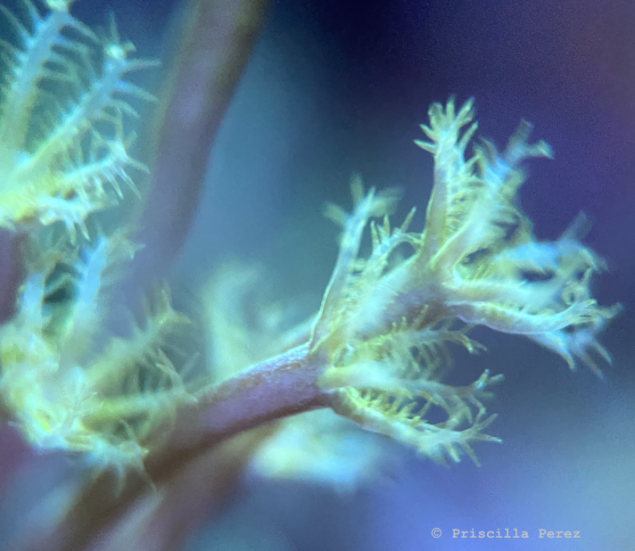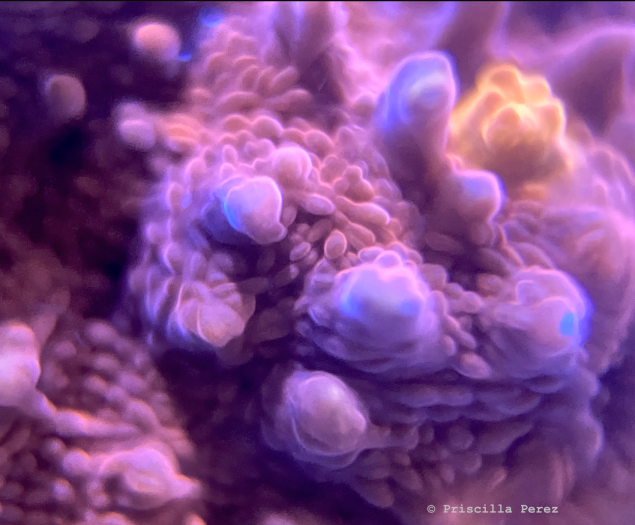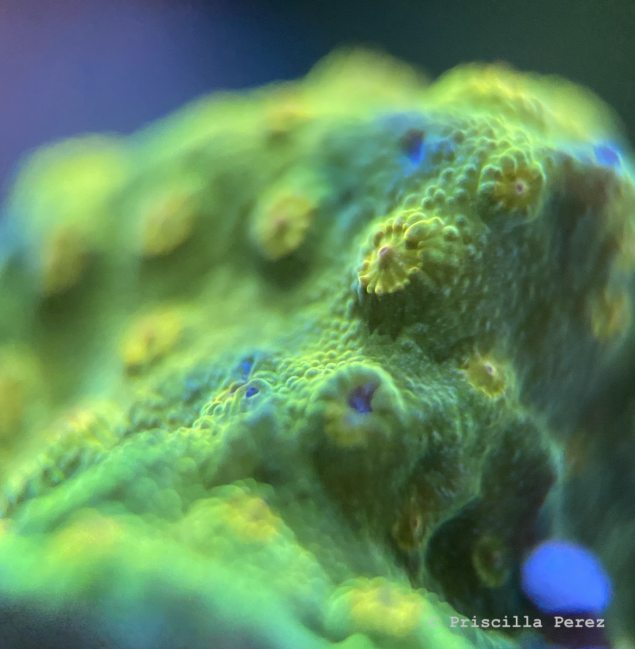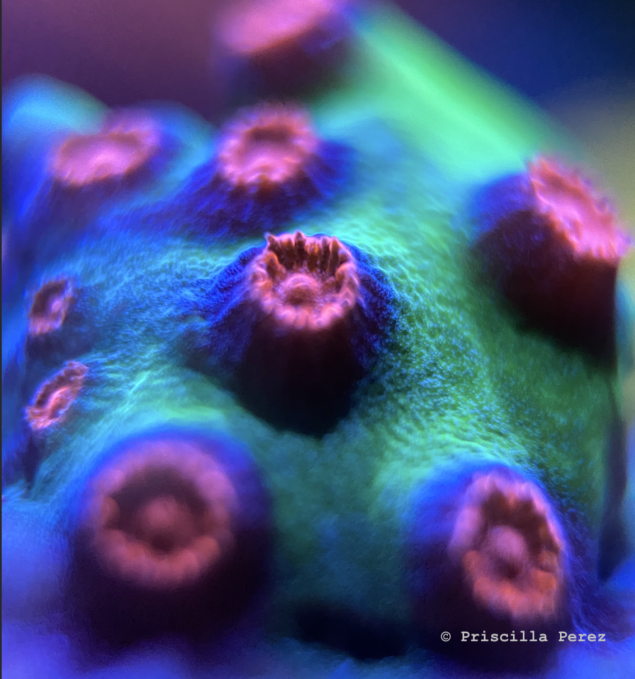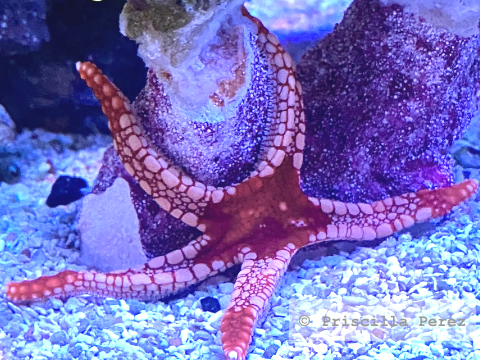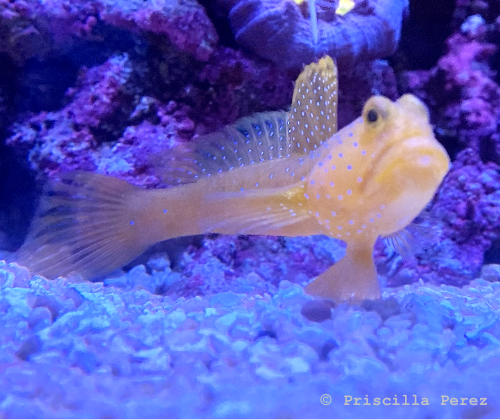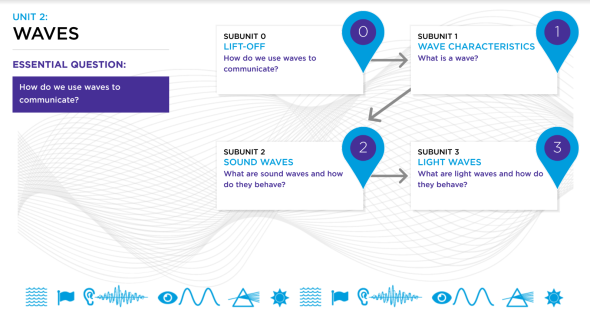
8th Grade Unit 2: Waves Roadmap
This page hosts Unit 2: Waves, and a roadmap of the 3 subunits that will be covered.
Subunit 1: Wave Characteristics
Link to this section
Below you will view and download:
🟩 Subunit Assessment Opportunities
🟩 5E Lesson Sequence
Subunit 1: Assessment Opportunities
Subunit 1 Assessment Opportunities
What should my students know and be able to do?
What should I prioritize?
Note: The materials below are personal recommendations from teachers in the field.
Feel free to consider your context when deciding whether to follow these suggestions.
|
|
|
|
|
|
|
|
|
|
|
|
|
|
|
|
|
|
|
|
|
|
|
|
|
|
|
|
|
|
View and download (by making a copy)- Subunit 1 Assessments
Subunit 1: 5E Lesson Sequence
Subunit Description
📂 Download ALL lessons at one time for Unit 2: Subunit 1 from this folder. 📂
Throughout the course of this subunit, students investigate the characteristics of waves to figure out how to use waves to communicate during a power outage. During their investigations, students collect and analyze data as they manipulate the characteristics of water waves to determine how to predictably control a wave’s characteristics. Students develop initial ideas around the relationship between the amplitude of a wave and the amount of energy transmitted through a wave. These ideas coalesce into a model that explains how a wave’s characteristics can be manipulated and what happens to the energy of a wave when the wave’s characteristics change.
| Lesson | Lesson Name | Teacher Document | Student Handout |
|---|---|---|---|
| 1 | Engage | ||
| 2 | Explore | ||
| 3 | Explain | ||
| 4 | Elaborate | 8.2 SU1 4Elaborate Teacher | 8.2 SU1 4Elaborate Student |
| 5 | Evaluate | ||
📂 Download ALL lessons at one time for Unit 2: Subunit 1 from this folder. 📂
Subunit 2: Sound Waves
Link to this section
Below you will view and download:
🟩 Subunit Assessment Opportunities
🟩 5E Lesson Sequence
Subunit 2: Assessment Opportunities
Subunit 2 Assessment Opportunities
View and download (by making a copy)- Subunit 2 Assessments
What should my students know and be able to do?
What should I prioritize?
Note: The materials below are personal recommendations from teachers in the field.
Feel free to consider your context when deciding whether to follow these suggestions.
|
|
|
|
|
|
|
|
|
|
|
|
|
|
|
|
|
|
|
|
|
|
|
|
|
|
|
|
|
|
View and download (by making a copy)- Subunit 2 Assessments
Subunit 2: 5E Lesson Sequence
Subunit Description
📂 Download ALL lessons at one time for Unit 2: Subunit 2 from this folder. 📂
In this subunit, students investigate the characteristics of sound waves and explore how to use sound waves to communicate through a wall. During their investigations, students collect data of sound waves traveling through different media. Students develop a model to explain that sound waves require a medium and that sound waves can be reflected, absorbed or transmitted through matter.
| Lesson | Lesson Name | Teacher Document | Student Handout |
|---|---|---|---|
| 1 | Engage | ||
| 2 | Explore | ||
| 3 | Explain | ||
| 4 | Elaborate | 8.2 SU2 4Elaborate Teacher | |
| 5 | Evaluate | ||
📂 Download ALL lessons at one time for Unit 2: Subunit 2 from this folder. 📂
Subunit 3: Light Waves
Link to this section
Below you will view and download:
🟩 Subunit Assessment Opportunities
🟩 5E Lesson Sequence
Subunit 3: Assessment Opportunities
Subunit 3 Assessment Opportunities
What should my students know and be able to do?
What should I prioritize?
Note: The materials below are personal recommendations from teachers in the field.
Feel free to consider your context when deciding whether to follow these suggestions.
|
|
|
|
|
|
|
|
|
|
|
|
|
|
|
|
|
|
|
|
|
|
|
|
|
|
|
|
|
|
View and download (by making a copy)- Subunit 3 Assessments
Subunit 3: 5E Lesson Sequence
Subunit Description
📂 Download ALL lessons at one time for Unit 2: Subunit 3 from this folder. 📂
In this subunit, students investigate the characteristics of light waves in order to figure out how to use light waves to communicate. During their investigations, students collect and analyze data to better understand how light wave characteristics change as a light wave passes through different materials. Students complete the design and testing for their culminating projects. Students also receive feedback on their projects and make revisions based on that feedback.
| Lesson | Lesson Name | Teacher Document | Student Handout |
|---|---|---|---|
| 1 | Engage | ||
| 2 | Explore | ||
| 3 | Explain | ||
| 4 | Elaborate | 8.2 SU3 4Elaborate Teacher | 8.2 SU3 4Elaborate Student |
| 5 | Evaluate | ||
📂 Download ALL lessons at one time for Unit 2: Subunit 3 from this folder. 📂
Unit 2: Waves Documents
Link to this section
Below you will view and download: Unit Plan, Standards, Culminating Project Assessments and Rubrics, Common Misconceptions, Materials, Unit 0: Lift-Off Lessons and Resources.
8.2 Waves: Overview
Overview
In this unit, students investigate the characteristics of waves and design a simple communication system that uses light and/or sound waves. Throughout the unit, students learn a simple wave model that describes waves as having a regular, repeating, pattern with a specific wavelength, frequency, and amplitude.
For the Group Culminating Project, using materials the teacher provides, students will design, build, and test systems of communication that use sound and/or light waves. Student solutions must address the benefits and drawbacks of their plan given varying circumstances. In the Individual Culminating Project, each student writes a report explaining the science behind the systems.
8.2 Waves: Unit Plan
Unit 2: Waves - Unit Plan
|
|
||
|
|
||
|
] ]
|
|
|
|
|
||
|
|
||
|
|
||
|
|
||
|
|
||
|
|
||
|
|
||
|
|
||
|
|
||
|
|
|
|
|
|
||||
|
|
|
|
|
|
|
|
|
|
|
|
|
|
|
|
|
|
|
|
|
|
||
|
|
|
|||
|
|
||||
|
|
|
|
||
|
|
|
|||
|
|
||||
|
|
|
|
|
|
|
|
|
|
||
|
|
|
|
|
|
|
|
|
|||
|
|
|
|
||
|
|
|
|
||
|
|
|
|
||
|
|
|
|
||
|
|
|
|||
“Disciplinary Core Ideas, Science and Engineering Practices, and Crosscutting Concepts” are reproduced verbatim from A Framework for K-12 Science Education: Practices, Crosscutting Concepts, and Core Ideas. DOI: https://doi.org/10.17226/13165. National Research Council; Division of Behavioral and Social Sciences and Education; Board on Science Education; Committee on a Conceptual Framework for New K-12 Science Education Standards. National Academies Press, Washington, DC. This material may be reproduced for noncommercial purposes and used by other parties with this attribution. If the original material is altered in any way, the attribution must state that the material is adapted from the original. All other rights reserved
8.2 Waves: Standards
Waves
Next Generation Science Standards Performance Expectations
|
|
Assessment Boundary: Assessment does not include electromagnetic waves and is limited to standard repeating waves.] |
|
|
Assessment Boundary: Assessment is limited to qualitative applications pertaining to light and mechanical waves.] |
|
|
|
|
|
|
NGSS Lead States. 2013. Next Generation Science Standards: For States, By States. Washington, DC: The National Academies Press.
Disciplinary Core Ideas
PS4.A: Wave Properties
- A simple wave has a repeating pattern with a specific wavelength, frequency, and amplitude.
- A sound wave needs a medium through which it is transmitted.
PS4.B: Electromagnetic Radiation
- When light shines on an object, it is reflected, absorbed, or transmitted through the object, depending on the object’s material and the frequency (color) of the light.
- The path that light travels can be traced as straight lines, except at surfaces between different transparent materials (e.g., air and water, air and glass) where the light path bends.
- A wave model of light is useful for explaining brightness, color, and the frequency-dependent bending of light at a surface between media.
- However, because light can travel through space, it cannot be a matter wave, like sound or water waves.
ETS1.B: Developing Possible Solutions
- There are systematic processes for evaluating solutions with respect to how well they meet the criteria and constraints of a problem.
- Sometimes parts of different solutions can be combined to create a solution that is better than any of its predecessors.
- A solution needs to be tested, and then modified on the basis of the test results, in order to improve it.
- Models of all kinds are important for testing solutions.
ETS1.C: Optimizing the Design Solution
- Although one design may not perform the best across all tests, identifying the characteristics of the design that performed the best in each test can provide useful information for the redesign process—that is, some of those characteristics may be incorporated into the new design.
- The iterative process of testing the most promising solutions and modifying what is proposed on the basis of the test results leads to greater refinement and ultimately to an optimal solution.
Science and Engineering Practices
Using Mathematics and Computational Thinking
Mathematical and computational thinking at the 6–8 level builds on K–5 and progresses to identifying patterns in large data sets and using mathematical concepts to support explanations and arguments.
- Use mathematical representations to describe and/or support scientific conclusions and design solutions.
Developing and Using Models (Focal Practice)
Modeling in 6–8 builds on K–5 experiences and progresses to developing, using, and revising models to describe, test, and predict more abstract phenomena and design systems.
- Develop and use a model to describe phenomena.
- Develop a model to generate data to test ideas about designed systems, including those representing inputs and outputs.
Analyzing and Interpreting Data
Analyzing data in 6–8 builds on K–5 experiences and progresses to extending quantitative analysis to investigations, distinguishing between correlation and causation, and basic statistical techniques of data and error analysis.
- Analyze and interpret data to determine similarities and differences in findings.
Crosscutting Concepts
Cause and Effect (Focal Crosscutting Concept)
- Cause and effect relationships may be used to predict phenomena in natural and designed systems.
Patterns
- Graphs and charts can be used to identify patterns in data.
Structure and Function
- Structures can be designed to serve particular functions by taking into account properties of different materials, and how materials can be shaped and used.
“Disciplinary Core Ideas, Science and Engineering Practices, and Crosscutting Concepts” are reproduced verbatim from A Framework for K-12 Science Education: Practices, Crosscutting Concepts, and Core Ideas. DOI: https://doi.org/10.17226/13165. National Research Council; Division of Behavioral and Social Sciences and Education; Board on Science Education; Committee on a Conceptual Framework for New K-12 Science Education Standards. National Academies Press, Washington, DC. This material may be reproduced for noncommercial purposes and used by other parties with this attribution. If the original material is altered in any way, the attribution must state that the material is adapted from the original. All other rights reserved.
Connections to the Nature of Science
Scientific Knowledge Assumes an Order and Consistency in Natural Systems
Science assumes that objects and events in natural systems occur in consistent patterns that are understandable through measurement and observation. (MS-ESS1-2)
Scientific Knowledge is Based on Empirical Evidence
Science knowledge is based upon logical and conceptual connections between evidence and explanations. (MS-PS2-2)(MS-PS2-4)
Connections to Engineering, Technology, and Applications of Science
Influence of Science, Engineering, and Technology on Society and the Natural World
- The uses of technologies and any limitations on their use are driven by individual or societal needs, desires, and values; by the findings of scientific research; and by differences in such factors as climate, natural resources, and economic conditions. (MS-PS2-1)
NGSS Lead States. 2013. Next Generation Science Standards: For States, By States. Washington, DC: The National Academies Press.
Link to Connect the 8th Grade Waves Unit with Prior Knowledge.
8.2 Waves: Culminating Project Assessments and Rubrics
Culminations Project Assessments and Rubrics
📂Download ALL files at one time from the 8.2 Culminating Project Assessments folder.📂
| Culminating Project File Docs |
|---|
| 8.2 Main–Culminating Projects |
| 8.2 Oral Presentation Rubric |
| 8.2 Science Content Rubric |
| 8.2 Science and Engineering Practices Rubric |
📂Download ALL files at one time from the 8.2 Culminating Project Assessments folder.📂
8.2 Waves: Common Misconceptions
Common Misconceptions
View and download (by making a copy) 8.2 Common Misconceptions
Lift-Off
|
|
|
|
|
|
Subunit 1: Wave Characteristics
What is a wave?
|
|
|
|
|
|
Subunit 2: Sound Waves
What are sound waves and how do they behave?
|
|
|
|
|
|
|
|
|
|
|
|
Subunit 3: Light Waves
What are light waves and how do they behave?
|
|
|
|
|
|
View and download (by making a copy) 8.2 Common Misconceptions
8.2 Waves: Materials
Materials
The Unit 2: Waves Materials table includes all of the items needed to teach five sections of this unit in a classroom of 32 students (eight groups of four). A detailed breakdown of how these items are used throughout the unit can be found in your Teacher Background Section at the subunit level and in each individual lesson in your Teacher Edition.
- Permanent materials have already been provided to all middle schools in the district and are expected to be reused from year to year.
- Consumable materials are replenished on an as-needed basis from year to year.
- Teacher Provided materials must be supplied by teachers each year.
Unit 2: Waves Materials
|
8.2 Waves: Subunit 0: Lift-Off Lessons
Subunit 0: Lift-Off
📂 Download ALL lessons at one time for Subunit 0: Lift-Off from this folder.📂
Lessons
| Lift-Off Lesson Documents |
|---|
| 8.2 SU0 Liftoff Slides |
| 8.2 SU0 Liftoff Groupwork Slides |
| 8.2 SU0 Liftoff Teacher |
| 8.2 SU0 Liftoff Student |
📂 Download ALL lessons at one time for Subunit 0: Lift-Off from this folder.📂
8.2 Waves: Want to know more about this unit?
Want to know more about this unit?
Resources
Here are some resources for Unit 8.2 Waves:
Strategic Education Research Partnership (SERP): Making Waves
“Making Waves.” Making Waves • Unit [E4] SciGen SERP. Accessed November 18, 2019. https://serpmedia.org/scigen/e4.html.
CK-12 Foundation. “12 Foundation.” CK. CK-12 Foundation. Accessed November 18, 2019. https://www.ck12.org/c/physical-science/mechanical-wave/.
CK-12 Foundation. “12 Foundation.” CK. CK-12 Foundation. Accessed November 18, 2019. https://www.ck12.org/c/physical-science/wavelength/.
CK-12 Foundation. “12 Foundation.” CK. CK-12 Foundation. Accessed November 18, 2019. https://www.ck12.org/c/physical-science/wave-amplitude/.
CK-12 Foundation. “12 Foundation.” CK. CK-12 Foundation. Accessed November 18, 2019. https://www.ck12.org/c/physical-science/wave-frequency/.
Sound Waves
“Making Waves.” Making Waves • Unit [E4] SciGen SERP. Accessed November 18, 2019. https://serpmedia.org/scigen/e4.html.
CK-12 Foundation. “12 Foundation.” CK. CK-12 Foundation. Accessed November 18, 2019. https://www.ck12.org/c/physical-science/sound-wave/.
CK-12: Intensity and Loudness of Sound
CK-12 Foundation. “12 Foundation.” CK. CK-12 Foundation. Accessed November 18, 2019. https://www.ck12.org/c/physical-science/intensity-and-loudness-of-sound/.
CK-12: Frequency and Pitch of Sound
CK-12 Foundation. “12 Foundation.” CK. CK-12 Foundation. Accessed November 18, 2019. https://www.ck12.org/c/physical-science/frequency-and-pitch-of-sound/.
Exploratorium: Full Spectrum Science: What Are Harmonics?
YouTube. YouTube. Accessed November 18, 2019. https://www.youtube.com/watch?v=LRQQxoG6rDY.’
Exploratorium: Anti-Sound Spring
“Anti-Sound Spring.” Exploratorium, December 21, 2017. https://www.exploratorium.edu/snacks/anti-sound-spring.
“Groovy Sounds.” Exploratorium, March 29, 2017. https://www.exploratorium.edu/snacks/groovy-sounds.
Light Waves
SERP: Waves Traveling the Universe
“Waves Traveling the Universe.” Waves Traveling the Universe • Unit [E5] SciGen SERP. Accessed November 18, 2019. https://serpmedia.org/scigen/e5.html.
CK-12: Electromagnetic Wave and Properties
CK-12 Foundation. “12 Foundation.” CK. CK-12 Foundation. Accessed November 18, 2019. https://www.ck12.org/c/physical-science/electromagnetic-wave-and-properties/.
CK-12 Foundation. “12 Foundation.” CK. CK-12 Foundation. Accessed November 18, 2019. https://www.ck12.org/c/physical-science/light/.
CK-12: Visible Light and Matter
CK-12 Foundation. “12 Foundation.” CK. CK-12 Foundation. Accessed November 18, 2019. https://www.ck12.org/c/physical-science/visible-light-and-matter/.
CK-12 Foundation. “12 Foundation.” CK. CK-12 Foundation. Accessed November 18, 2019. https://www.ck12.org/c/physical-science/reflection/.
Assessment Practice Items
Stanford University: Stanford NGSS Assessment Project, Short-Response Items
“Short-Response Items.” Short-response items | Stanford NGSS Assessment Project. Accessed November 18, 2019. https://snapgse.stanford.edu/snap-assessments/short-response-items.
Other Resources in 8.2 Waves
“About.” The Physics Classroom. Accessed November 18, 2019. https://www.physicsclassroom.com/about.
Brainard, Jean. “Refraction.” CK. CK-12 Foundation, October 1, 2019. https://www.ck12.org/c/physical-science/refraction/lesson/Refraction-MS-PS/?referrer=concept_details.
“Stadium Waves.” Exploratorium, January 4, 2017. https://www.exploratorium.edu/blogs/tangents/stadium-waves.
“The Physics Classroom Tutorial.” The Physics Classroom. Accessed November 18, 2019. https://www.physicsclassroom.com/class/light/Lesson-2/Light-Absorption,-Reflection,-and-Transmission.
YouTube. Slow Motion Wave video. Accessed November 18, 2019. https://www.youtube.com/watch?v=GkqGKheB2Ac&feature=youtu.be.
“Virtual Oscilloscope.” Academo.org. Accessed November 18, 2019. https://academo.org/demos/virtual-oscilloscope/.
“Wave Behaviors.” NASA. NASA. Accessed November 18, 2019. https://science.nasa.gov/ems/03_behaviors.
View and download (by making a copy) of Resources
Note: The CC BY-NC 4.0 License does not apply to photos, images, articles, and other materials within the curriculum that have been licensed by San Francisco Unified School District and Stanford University (the Authors). These include but are not limited to photos from commercial stock photo/image agencies such as Shutterstock.com or Getty Images (iStock.com) and photos or graphics where the Authors obtained permission from organizations such as UCMP or SERP. This CC BY-NC 4.0 License also does not apply to articles that the Authors received permission to reprint [Reprinted with Permission]. You can identify such a photo, image, or licensed material by looking at the credit embedded within or associated with the content. You are allowed to reproduce the licensed material for your own personal, classroom, non-commercial use only, BUT (i) you may not modify, alter, adapt, or otherwise create any derivative work from, a licensed material and (ii) you may not distribute, transmit or disseminate a licensed material or any copy or derivative work thereof, to any third party, whether by itself, as part of a large works, or otherwise.
Note also, that throughout the student pages, there are some icons created by SFUSD and Stanford that may not have a credit line because of lack of space.
The general icons that follow were created by the San Francisco Unified School District and Stanford University and are all [CC BY-NC 4.0]:
These culminating project icons that follow were created or photographed by the San Francisco Unified School District and Stanford University and are all [CC BY-NC 4.0]:
8th Grade Science Units Link to this section
This page was last updated on September 17, 2024


